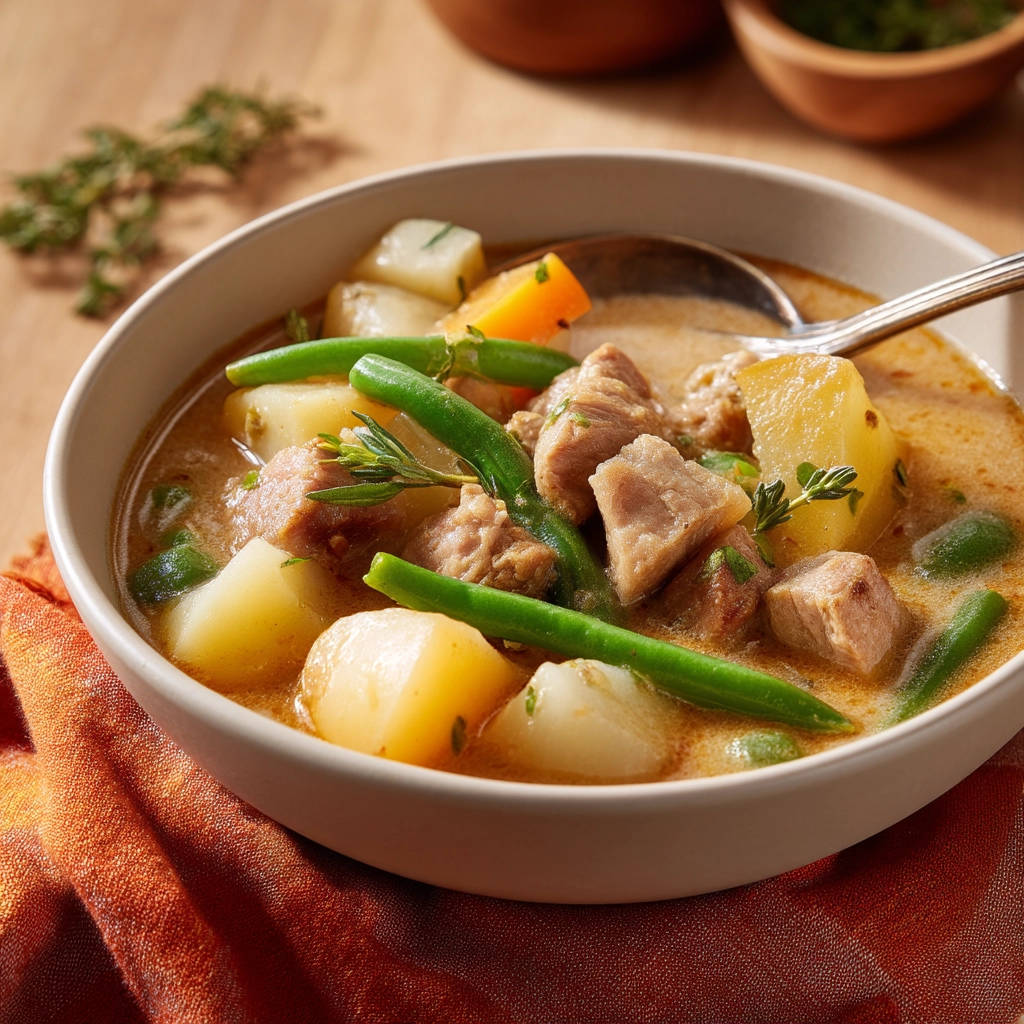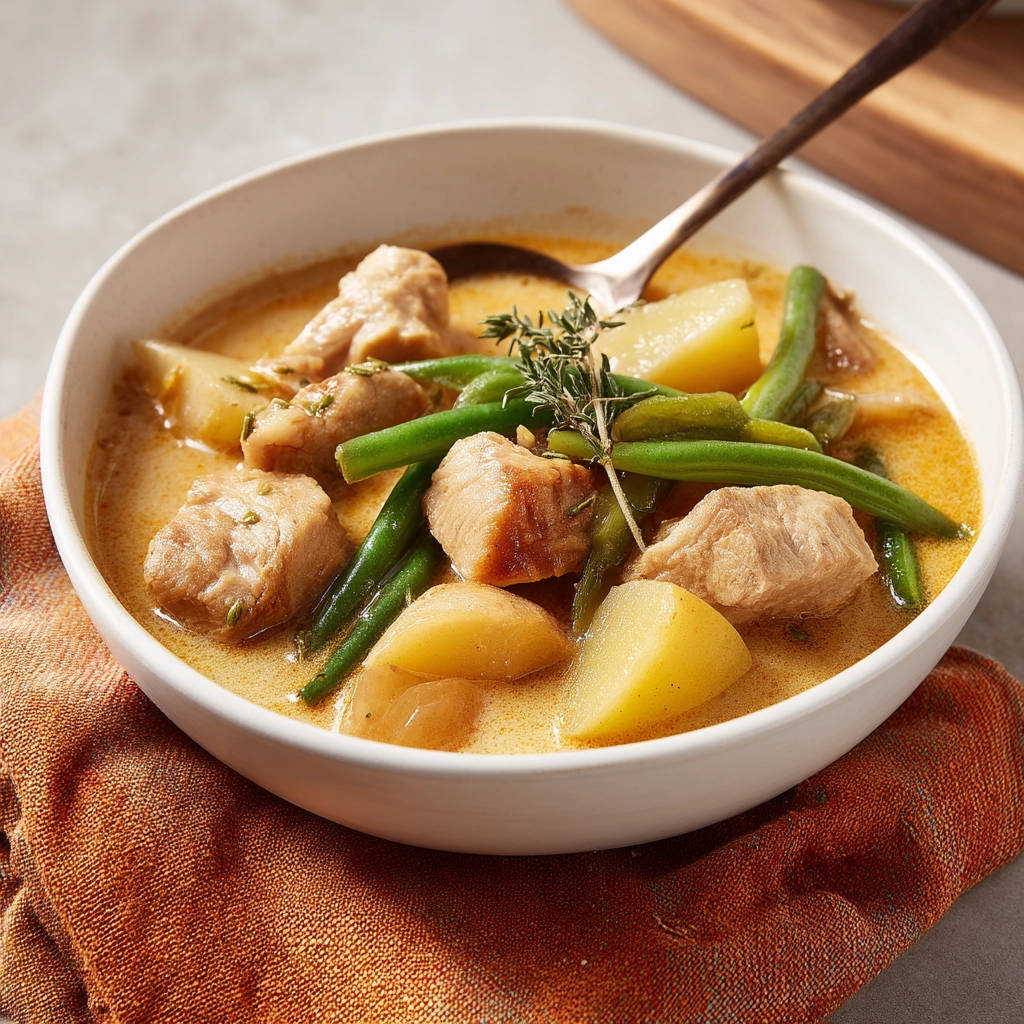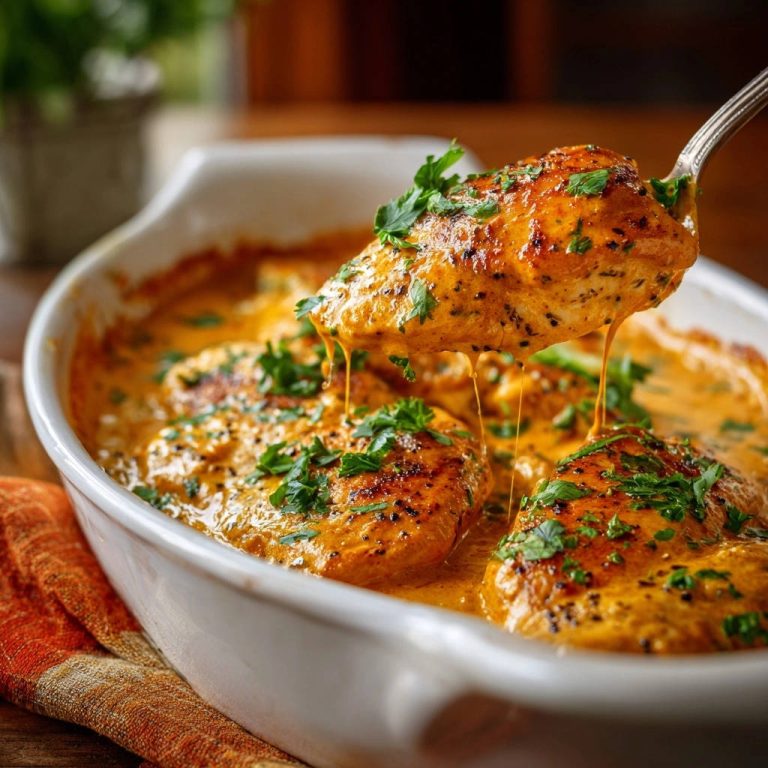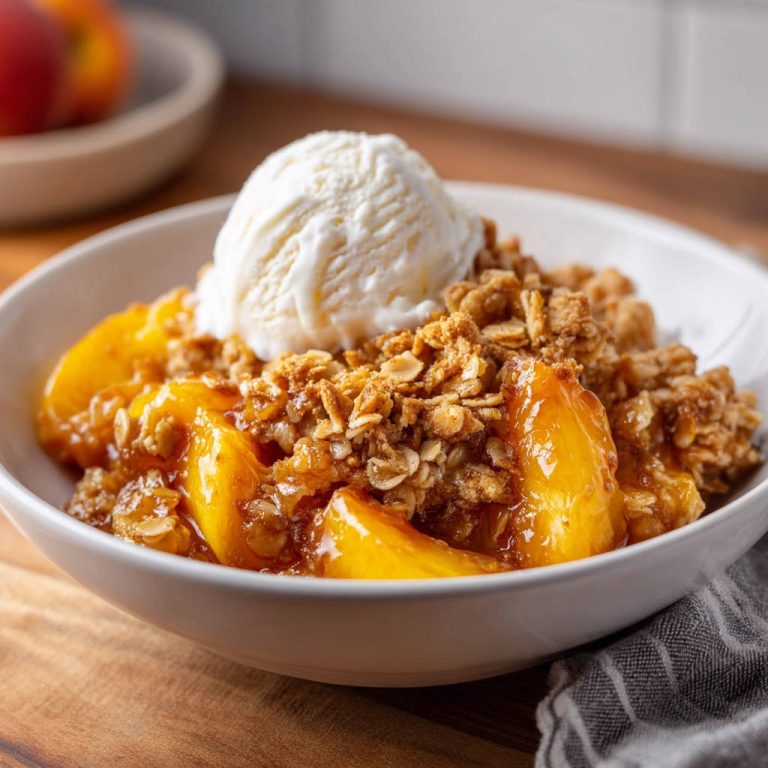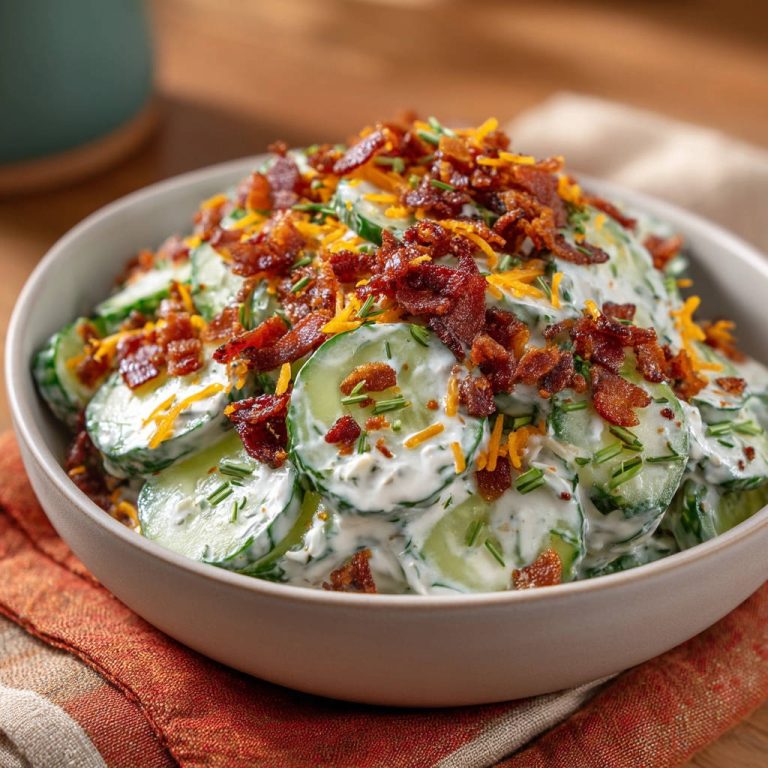Oh, comfort food. Is there anything better? Especially when the weather turns chilly or you just need a bowl of pure, warm goodness that feels like a hug. For me, that ultimate comfort is often a big, steaming bowl of hearty beef & vegetable stew. There’s something so incredibly satisfying about tender chunks of beef, soft potatoes, sweet carrots, and vibrant green beans swimming in a rich, savory broth.
But let’s be honest. We’ve all been there, right? You spend time prepping, simmering, anticipating that perfect bite, only to discover the beef is tough and chewy. It’s truly disappointing! It happened to me more times than I care to admit. But after much trial and error (and a little bit of kitchen science!), I finally cracked the code on how to make beef stew with perfectly tender, melt-in-your-mouth meat every single time. This simple method is a game-changer, transforming humble ingredients into an unforgettable meal.
This recipe for Hearty Beef & Vegetable Stew isn’t just about avoiding tough meat; it’s about building deep flavor from the ground up. It’s a classic for a reason, combining familiar ingredients in a way that just works. Ready to make a stew so good, you’ll never dread the thought of chewy beef again?
Why You’ll Love This Hearty Beef & Vegetable Stew
Beyond the promise of tender beef, there are so many reasons this particular beef and vegetable stew recipe deserves a spot in your rotation:
- Guaranteed Tender Meat: We’re focusing on a specific technique that ensures your beef is always soft and yielding. Say goodbye to rubbery stew!
- Deep, Satisfying Flavor: Browning the meat and sautéing the aromatics builds a foundational flavor that permeates the entire stew.
- Packed with Nutrients: Loaded with wholesome vegetables like potatoes, carrots, and green beans, it’s a complete meal in one pot.
- Pure Comfort Food: There’s an undeniable coziness to a warm bowl of stew on a cold day.
- Relatively Simple: While it requires some simmering time, the active steps are straightforward and easy for any home cook.
Gathering Your Ingredients for This Tender Beef Stew
Creating a truly memorable hearty beef & vegetable stew starts with selecting the right components and understanding the role each plays. We’re not just throwing things in a pot; we’re building layers of flavor and texture. Here’s what you’ll need:
For the Foundation:
Our star ingredient is the beef. You’ll need 2 pounds of beef stew meat, cut into roughly 1-inch cubes. While pre-cut stew meat is convenient, sometimes cutting it yourself from a chuck roast or even a tougher cut like brisket can give you better control over the size and quality. The beauty of these cuts is they have connective tissue that breaks down into gelatin during slow cooking, creating that luscious, tender texture we’re after.
To help the beef brown beautifully and to slightly thicken the stew later, we’ll use a couple of tablespoons of all-purpose flour, seasoned simply with 1 teaspoon of salt and 1/2 teaspoon of black pepper. This coating is simple but effective.
Flavor Builders:
A good quality cooking fat is essential for searing. We’ll use 2 tablespoons of olive oil. Its relatively high smoke point is suitable for getting a good brown on the meat, and it adds a subtle richness.
Aromatics are the backbone of many savory dishes. You’ll need 1 large onion, chopped, which sweetens as it cooks, and 2 cloves of garlic, minced, providing that essential pungent depth. These two work together to create a fragrant base for our stew.
For the liquid, 4 cups of beef broth provides the body and deep meaty flavor. Choose a good quality broth or stock for the best results. And for classic stew flavor, 1 teaspoon of dried thyme adds an earthy, slightly floral note that pairs wonderfully with beef and vegetables.
The Hearty Vegetables:
No beef and vegetable stew is complete without, well, vegetables! We’re using hearty root vegetables that stand up well to simmering. You’ll need 1 pound of potatoes, peeled and cut into substantial 1 1/2-inch chunks. Using a waxy potato like Yukon Gold or red potatoes can help them hold their shape better during cooking compared to starchy Russets, though Russets will yield a creamier broth as they break down slightly. Cut them large enough so they don’t turn to mush.
Next, 1/2 pound of carrots, peeled and cut into 1-inch chunks. Carrots add natural sweetness and a pop of color. Cutting them a bit smaller than the potatoes helps ensure they become tender around the same time.
Finally, for a touch of freshness and vibrant green, 1/2 pound of fresh green beans, trimmed. These are added towards the end to keep them from becoming overly soft and discolored.
Here’s the complete list:
- 2 pounds beef stew meat, cut into 1-inch cubes
- 2 tablespoons all-purpose flour
- 1 teaspoon salt
- 1/2 teaspoon black pepper
- 2 tablespoons olive oil
- 1 large onion, chopped
- 2 cloves garlic, minced
- 4 cups beef broth
- 1 teaspoon dried thyme
- 1 pound potatoes, peeled and cut into 1 1/2-inch chunks
- 1/2 pound carrots, peeled and cut into 1-inch chunks
- 1/2 pound fresh green beans, trimmed
Crafting Your Hearty Beef & Vegetable Stew: Step-by-Step
Ready to transform these simple ingredients into a pot of comforting stew? This process is straightforward, but paying attention to a couple of key techniques is what makes all the difference between tough meat and tender perfection. Follow along, and let’s make some magic happen!
-
Prep the Beef for Searing Success: Begin by taking your beef stew meat cubes and patting them thoroughly dry with paper towels. This step is crucial! Excess moisture on the surface will steam the meat instead of allowing it to sear properly. In a medium bowl, toss the dried beef with the all-purpose flour, salt, and black pepper until each piece is lightly and evenly coated. This coating helps to achieve a better, deeper sear in the next step, which is vital for flavor, and also contributes slightly to thickening the stew as it cooks.
-
Sear the Beef (Don’t Rush This!): Heat the olive oil in a large, heavy-bottomed pot or a Dutch oven over medium-high heat. When the oil is hot and shimmering, carefully add the floured beef in a single layer. It’s important not to overcrowd the pot at this stage; if necessary, cook the beef in batches. Overcrowding lowers the temperature of the pot, preventing a good sear. Cook the beef for several minutes per side, turning with tongs, until each piece is deeply browned on all sides. You’re looking for a rich, dark brown crust. This searing step is paramount for developing deep, savory flavor (the Maillard reaction!) and is the first secret to preventing tough meat by locking in some juices initially. Remove the browned beef from the pot and set it aside on a plate or in a bowl.
-
Build the Aromatic Base: Reduce the heat in your pot to medium. Add the chopped onion to the pot, scraping up any browned bits from the bottom (those bits are pure flavor!). Cook the onion, stirring occasionally, until it has softened and become translucent, which usually takes about 5-7 minutes. Once the onion is soft, add the minced garlic and cook for just about 1 minute more. You’ll know it’s ready when the garlic becomes wonderfully fragrant. Be careful not to burn the garlic!
-
Combine and Bring to a Simmer: Return the browned beef cubes, along with any juices that have accumulated on the plate, back into the pot with the softened onions and garlic. Pour in the beef broth, ensuring the meat is mostly submerged. Stir in the dried thyme. Increase the heat slightly and bring the liquid in the pot to a gentle simmer. You should see small bubbles rising to the surface, but not a rolling boil.
-
The Magic Happens: Low and Slow Simmer: Now, for the absolute key to tender meat! Once you have a gentle simmer, cover the pot tightly with a lid. Reduce the heat to very low. The goal is to maintain that gentle simmer, just barely bubbling. Let the stew cook undisturbed for a significant amount of time – 1 1/2 to 2 hours is usually enough, but it could take a little longer depending on the beef cut. You’ll know it’s done when the beef is incredibly tender and easily pierced with a fork with very little resistance. This long, slow cooking time at a low temperature is what truly breaks down the tough connective tissues in the stew meat, transforming it into that desired melt-in-your-mouth texture. Check occasionally to make sure it’s still just gently simmering and not boiling rapidly, adjusting the heat if needed.
-
Add the Root Vegetables: After the beef has become tender, it’s time to add the potatoes and carrots. Carefully add the prepared chunks of potato and carrot to the pot, nestling them down into the liquid. Increase the heat slightly if necessary to bring the stew back to a gentle simmer. Cover the pot again and continue to cook for another 20-25 minutes. The vegetables are ready when the potatoes and carrots are fork-tender but still hold their shape. Cooking the root vegetables separately from the initial beef simmer prevents them from overcooking and turning mushy.
-
Finish with Green Beans: Finally, add the fresh green beans to the pot. Stir them in gently. Cover the pot and cook for just 5-7 minutes more. You want the green beans to become crisp-tender – still having a slight bite – and to turn a vibrant, bright green color. Adding them at the very end preserves their texture and fresh flavor.
-
Season and Serve: Give the stew a final taste. At this point, you’ll likely need to adjust the seasoning. Add more salt and black pepper as needed to enhance all those wonderful flavors. Ladle the hot, hearty beef & vegetable stew into bowls and serve immediately. It’s pure comfort in a bowl!
Tips for Perfect Hearty Beef & Vegetable Stew Every Time
Even with a reliable recipe, a few extra tips can help ensure your hearty beef and vegetable stew turns out perfectly every single time. These are the little secrets that elevate a good stew to a great one!
- Choose the Right Beef Cut: As mentioned, chuck roast is often the best choice for stew. Look for cuts with good marbling and visible connective tissue. These cheaper, tougher cuts are ideal because the low-and-slow cooking process breaks down the collagen, making them incredibly tender and adding richness to the sauce.
- Don’t Skimp on Searing: I know, I know, it takes time, and maybe you’re tempted to skip the batches. Don’t! Searing is non-negotiable for developing deep flavor and color, which are essential for a truly satisfying stew. Use medium-high heat and resist the urge to move the meat until a crust forms.
- Master the Gentle Simmer: A hard boil will make your meat tough, turn your vegetables to mush, and evaporate too much liquid. A gentle simmer – where you see occasional bubbles but the liquid is mostly still – is key to the magical breakdown of connective tissue in the beef. You can check on it periodically during that long cooking phase to ensure it’s not boiling too vigorously.
- Vegetable Timing Matters: Adding the potatoes and carrots after the beef is already tender prevents them from overcooking and disintegrating. Adding the green beans right at the end ensures they stay bright green and retain a pleasant crisp-tender texture.
- Adjust Consistency: This recipe results in a lovely, savory broth. If you prefer a thicker stew, you can make a slurry of 1-2 tablespoons of flour or cornstarch mixed with a little cold water after the vegetables are tender, stir it into the simmering stew, and cook for a few more minutes until thickened. If it’s too thick, simply stir in a little more beef broth or water until it reaches your desired consistency.
- Resting the Stew: Like many braised dishes, this stew often tastes even better after it has had a chance to sit for 10-15 minutes off the heat before serving. This allows the flavors to meld further. It’s also fantastic reheated the next day!
What to Serve With Your Comforting Beef Stew
This hearty beef & vegetable stew is practically a meal in itself, but a few simple additions can make it even more special. Thinking about what to pair with it is part of the fun!
Classic pairings often involve something to soak up that delicious broth. Fluffy homemade biscuits are always a winner. A crusty loaf of bread, maybe warmed slightly, is also perfect. You could even serve it over a bed of fluffy quinoa or rice for an extra layer of texture and heartiness.
To add a touch of freshness or contrast, a simple green salad is a great choice. Our easy kale salad or just some mixed greens with a light vinaigrette would be lovely. For something a little different but equally comforting, consider serving it alongside creamy scalloped potatoes, though that might be comfort food overload! A simple side of crispy roasted Brussels sprouts could add a nice bit of bitterness and texture contrast too.
Your Hearty Beef Stew Questions Answered (FAQ)
Making beef stew can sometimes bring up a few questions, especially when you’re aiming for that perfect tender texture. Here are some common ones:
What’s the best cut of beef for stew?
Chuck roast is widely considered the best cut for beef stew. Its generous marbling and connective tissue (collagen) break down during long, slow cooking, yielding incredibly tender, flavorful, and moist results. Other good options include brisket or even round steak, but chuck is generally the most reliable for guaranteed tenderness in stew.
Can I make this beef stew in a slow cooker?
Absolutely! You can adapt this hearty beef & vegetable stew recipe for a slow cooker. You’ll still want to sear the beef and sauté the onions and garlic on the stovetop first for maximum flavor. Then, transfer the seared beef, onions, garlic, beef broth, and thyme to your slow cooker. Cook on low for 6-8 hours, or until the beef is very tender. Add the potatoes and carrots during the last 2-3 hours, and the green beans during the last 30-60 minutes. The timing for adding the vegetables is key to prevent them from becoming mushy.
My stew is too thin/too thick. How can I fix it?
If your stew is too thin at the end of cooking, you can thicken it. The easiest way is to make a slurry: whisk together 1-2 tablespoons of all-purpose flour or cornstarch with an equal amount of cold water until smooth. Stir this mixture into the simmering stew and let it cook for a few minutes, stirring gently, until it thickens to your desired consistency. For a thicker stew, you can also simmer uncovered for the last 15-20 minutes to allow some liquid to evaporate, but be careful not to overcook the vegetables.
If your stew is too thick, simply stir in a little more beef broth or water, a quarter cup at a time, until it reaches your preferred consistency.
Can I add other vegetables to this hearty beef stew?
Yes, this recipe is very adaptable! Feel free to add other hearty vegetables that benefit from simmering. Cubed rutabaga, parsnips, turnips, or even mushrooms added with the potatoes and carrots would be delicious additions. Peas are also a popular addition and can be stirred in along with the green beans at the very end.
How do I store and reheat leftover beef stew?
Leftover hearty beef & vegetable stew stores beautifully. Let the stew cool completely, then transfer it to airtight containers. It will keep in the refrigerator for 3-4 days. For longer storage, you can freeze the stew in freezer-safe containers or bags for up to 3-4 months. Thaw overnight in the refrigerator. To reheat, gently warm the stew in a pot on the stovetop over medium-low heat, stirring occasionally, until heated through. You may need to add a splash of beef broth or water to loosen it up, as it often thickens more upon standing.
Enjoy Your Homemade Hearty Beef & Vegetable Stew!
There you have it – the secrets to a deeply flavorful, comforting, and, most importantly, perfectly tender hearty beef & vegetable stew. It’s a dish that warms you from the inside out and proves that with a little patience and the right technique, you can conquer tough stew meat forever.
This recipe is perfect for a cozy family dinner, feeding a crowd, or making a big batch for delicious leftovers throughout the week. It’s the kind of classic comfort food that never goes out of style.
Give this recipe a try and experience the joy of truly tender beef stew. I’d love to hear how it turns out for you! Leave a comment below and let me know your favorite part or any twists you added. Happy cooking!
Hearty Beef & Vegetable Stew
Ingredients
- 2 pounds beef stew meat, cut into 1-inch cubes
- 2 tablespoons all-purpose flour
- 1 teaspoon salt
- 1/2 teaspoon black pepper
- 2 tablespoons olive oil
- 1 large onion, chopped
- 2 cloves garlic, minced
- 4 cups beef broth
- 1 teaspoon dried thyme
- 1 pound potatoes, peeled and cut into 1 1/2-inch chunks
- 1/2 pound carrots, peeled and cut into 1-inch chunks
- 1/2 pound fresh green beans, trimmed
Directions
- Pat the beef stew meat completely dry with paper towels. In a medium bowl, toss the meat with flour, salt, and pepper until evenly coated. Patting the meat dry and coating it helps achieve a good sear, which adds flavor and color.
- Heat the olive oil in a large pot or Dutch oven over medium-high heat. Add the floured beef in a single layer, working in batches if necessary to avoid overcrowding the pot. Cook until well browned on all sides. This searing step is crucial for building flavor and preventing tough meat; don’t rush it. Remove the browned meat from the pot and set aside.
- Add the chopped onion to the pot and cook over medium heat, stirring occasionally, until softened, about 5-7 minutes. Add the minced garlic and cook for 1 minute more until fragrant.
- Return the browned beef to the pot. Pour in the beef broth and add the dried thyme. Bring the liquid to a gentle simmer.
- Here’s the key for tender meat: Cover the pot tightly, reduce the heat to low, and let the stew simmer gently for 1 1/2 to 2 hours, or until the beef is very tender when pierced with a fork. The long, slow cooking time at a low temperature breaks down the tough connective tissues in the stew meat, resulting in that desired tenderness. Check occasionally to ensure it’s simmering very gently and not boiling rapidly.
- Add the potatoes and carrots to the pot. Increase heat slightly if needed to return to a gentle simmer. Cover and cook for another 20-25 minutes, or until the potatoes and carrots are tender.
- Add the green beans to the pot and cook for 5-7 minutes more, or until they are crisp-tender and bright green.
- Taste and adjust seasoning with more salt and pepper if needed. Serve hot.

